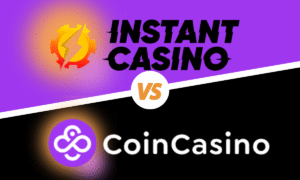One of the biggest threats to the banking sector today is technology. Whether it is coming from large technology firms such as Google Inc. (GOOG), Apple Inc. (AAPL), eBay Inc. (EBAY) or Amazon.com Inc. (AMZN), or from new financial technology (FinTech) start-ups, traditional banks are beginning to taking notice. One potential disrupter for the financial industry today comes from applications involving blockchain technology — the tamper-proof system of distributed ledgers which underlie cryptocurrencies such as Bitcoin. Large financial institutions, from investment banks to stock exchanges to central banks, are all beginning to work on their own blockchain-based solutions in order to stay on top of this innovation. (For more, see: Technology, The Biggest Threat to Banks.)
Banks are Taking Notice
Before looking at just how blockchain technology can disrupt traditional banking, it is worth taking note of some the key institutions that have publicly announced interest in it (meanwhile, many other banks are doing so without informing the public). (See also: How Will Bitcoin 2.0 Change the World)
French investment bank BNP Paribas has announced it will begin looking at how blockchain technology can be applied to its currency funds and for order processing.
Technology-focused stock exchange NASDAQ OMX Group Inc. (NDAQ) has said it is working with blockchains to “reduce the time, costs, and points of friction across the capital markets.”
Goldman Sachs Group Inc. (GS), while not overtly reporting that they are working on anything in house, caused some speculation after it participated in a $50 million investment round in funding Bitcoin wallet and payments company Circle, Inc.
Spain-based Banco Santander (SAN) is working internally to develop blockchain-based solutions that will reduce its costs by $20 billion a year by the end of the decade.
Barclays (BCS) is viewing blockchain technology as “transformative” and is experimenting with it both internally and via partnerships with start-ups to use it as it relates to financial services.
Swiss investment bank UBS (UBS) has gone so far as to create its own standalone blockchain lab to conduct proprietary research for the company to use.
It has been revealed that Citigroup Inc. (C) has worked on at least three different blockchain-based undertakings including its own cryptocurrency known as CitiCoin.
Additionally, Société Generale, Standard Chartered, The Bank of England, Deutsche Bank, DBS Bank, BBVA (BBVA), LHV Bank, BNY Mellon (BK), CBW Bank, Westpac (WBK) and the Commonwealth Bank of Australia are all in the race to research and deploy this technology.
Payments and Remittances
The most obvious and basic use for blockchain technology is its use as a payments system. Bitcoin and other cryptocurrencies act both as a digital money and also a method to send payments in that money-form around the globe. These transactions require only an internet connection and take place instantly. While it is true that it may take many minutes for a transaction to be 100% confirmed, the transaction itself takes place in a matter of moments. These transactions are borderless, secure and largely anonymous. Furthermore, transaction costs are minimal, costing only a few cents per transaction making it a much cheaper way to send money around the world than wire companies like Western Union (WU) or via credit card processors such as Visa Inc. (V), Mastercard Inc. (MA) or Discover Financial Services (DFS). A merchant not wanting to pay the initial and ongoing fees in order to accept credit cards could take electronic payment via a cryptocurrency instead for a fraction of the cost.
Remittance overseas is a difficult undertaking. The fees are high, processing time is slow, the money can be intercepted or stolen, and there are legal and tax issues that must be considered. A blockchain-based system would eliminate these problems. Already there are dozens of companies that have been started to facilitate remittances in this way.
Account Balances and Deposits
Consumers generally utilize banks to hold deposits in checking and savings accounts. But once you deposit money into a bank account, the bank loans most of it out via fractional reserve banking. As a result, most of the money that shows up when you view your account balance is not held by the bank. In fact, a bank run causes a bank to fail when too many customers attempt to withdraw their money all at the same time, and the money just isn’t there. A bank account balance, therefore, is just an accounting entry.
The blockchain is ultimately a ledger that represents accounting entries. Therefore, bank accounts could come to be represented on blockchains making them more secure, accessible and cheaper to maintain. Furthermore, it could help alleviate the risk of bank runs.
Secondary Market Trading and Clearing
The simplest purchase of a company’s shares to a complex over-the-counter currency swap requires clearing and settlement of trades. Ownership of the asset or contract being traded must verifiably change hands and be recorded. Today, exchange fees and clearing fees are added to the cost of each trade and can become sizable over time and given large volumes of orders.
If the ownership of shares could exist on a blockchain and any change of ownership could be immediately validated and confirmed, it would greatly reduce transaction costs and clearing costs for all sorts of asset classes from stocks to bonds to derivatives to commodities to real estate. It is entirely possible that such storied institutions as the New York Stock Exchange or the Chicago Board of Trade may one day be replaced by a distributed ledger technology that is more secure, robust and less expensive to operate and transact on. (For more, see: Medici: The Blockchain Based Stock Exchange.)
Overstock (OSTK) recently announced it was developing a blockchain-based asset exchange called T0 in order to directly issue some of its corporate bonds to investors. New York-based bitcoin exchange Coinsetter has announced that it will roll out a blockchain-based platform to clear over the counter transactions which can settling in T+10 minutes. To put that in to perspective, buying a share of stock on a U.S. exchange takes T+3 days to settle.
Primary Market Issuance and IPOs
If secondary market trading can occur on blockchains, can primary markets also exist? The answer is yes. Imagine you are a company seeking to raise capital via issuing new shares to public via an IPO. Today, this would be a very expensive undertaking requiring an investment bank (or a syndicate of such banks) to underwrite and sell your shares. This can cost as much as 9% or more of the capital being raised.
Now, imagine that you can issue shares of your company by yourself directly to the blockchain where you can then sell them in exchange for money. These virtual shares can then be exchanged on secondary markets that also exist via the blockchain. If this scenario becomes accepted by the public, it could be a huge disrupter to both asset exchanges as well as the investment banking industry.
The Bottom Line
Blockchain technology is being taken seriously by the financial sector as it may prove to be a great disrupter to the traditional banking industry. The tamper-proof, decentralized, immutable nature of the blockchain make it ideal for reducing costs and streamlining everything from payments, asset trading, securities issuance, retail banking, and clearing and settlements. It becomes obvious that blockchain technology is much more than Bitcoin or cryptocurrencies. While those implementations as payments and money systems are indeed disruptive, the greater disruption may come from alternative uses of this unique and powerful characteristics.






More Stories
SafeMoon Space – THE NEXT BIG DeFi. Last Chance To Buy/Reserve SMSP Token
The “Whirlwind” NFT Game And Dragon Pool Is The Highlight Of The Ecosystem Blockchain – Gaming
FRET: Future Real Estate Token That You Shouldn’t Miss Out On